11 Tips for Growing Pumpkins on a Trellis (Plus the Pros and Cons)
Pumpkins are often seen spreading across the ground, but they can grow just as well when trained on a trellis. This approach helps manage small garden areas where space is limited. It allows air to move more freely around the vines, keeping them healthier. Still, it may require extra care and planning to make sure the pumpkins are supported as they grow larger. To help you decide, here are some tips along with the benefits and drawbacks to consider.
This post may contain affiliate links, which helps keep this content free. Please read our disclosure for more info.
Choose the Right Pumpkin Variety for Trellis Growing
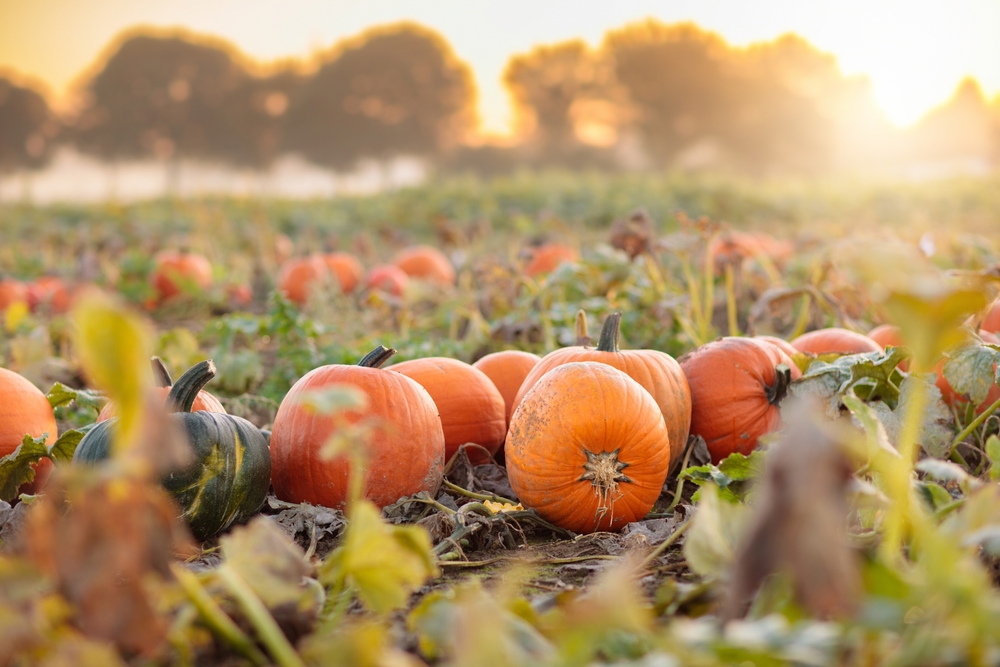
Small to medium pumpkin varieties are the best choice when using a trellis. Large pumpkins can become too heavy and may break the vines or damage the support. Varieties such as Sugar Pie or Baby Bear are popular because of their lighter weight. Selecting the right type helps reduce stress on the trellis and keeps your plants healthy. This first step makes the entire process more manageable.
A pro of choosing smaller varieties is that the fruits develop without needing heavy reinforcements. They ripen faster and are easier to handle when harvesting. A con is that smaller pumpkins may not have the same size appeal as larger ones. However, they still offer a sweet taste and are excellent for cooking or decoration. This makes them a reliable choice for trellis gardening.
Build a Strong and Stable Trellis for Pumpkins
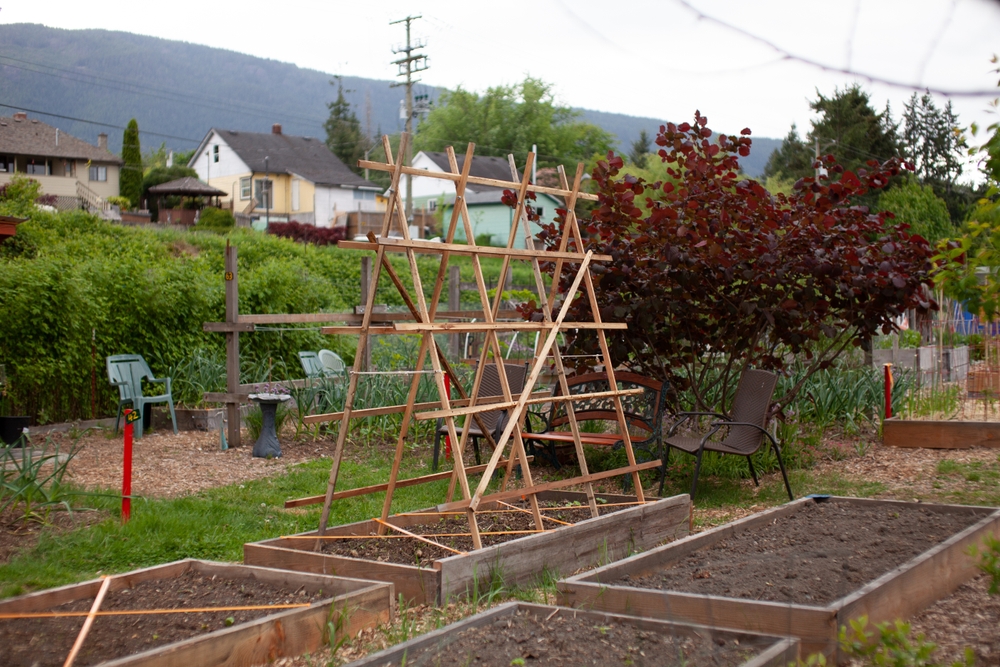
Pumpkin vines can grow long and heavy, so a durable trellis is essential. Materials like wood, metal, or thick garden netting are commonly used. The trellis should be at least six to eight feet tall to give the vines room to climb. It must also be anchored well into the ground to withstand wind and weight. A strong structure keeps the plants safe throughout the season.
The main advantage of a solid trellis is better support for both vines and fruits. It helps prevent plants from collapsing under their own weight. On the downside, building a trellis requires effort and initial cost. If it is not sturdy enough, the structure may fail mid-season. Taking time to build it properly avoids problems later.
Train Pumpkin Vines to Climb the Trellis
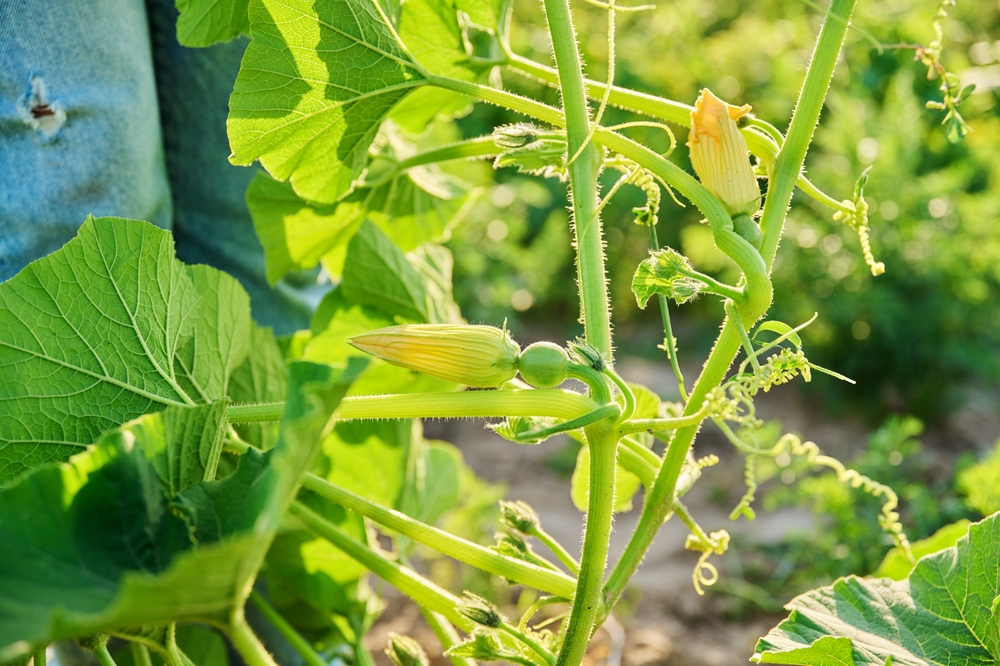
Pumpkin vines do not always climb naturally, so guiding them is necessary. You can tie the vines loosely with soft garden ties or cloth strips. This helps them grow upward and attach securely. Regularly checking their direction ensures they do not sprawl across the ground. Training the vines from the start keeps growth controlled.
The benefit of this step is better air circulation, which reduces fungal problems. It also makes the garden look tidier and easier to maintain. A disadvantage is that training vines requires consistent attention. If neglected, vines can tangle or grow unevenly. A little patience early on pays off with healthier plants later.
Provide Extra Support for Growing Pumpkins
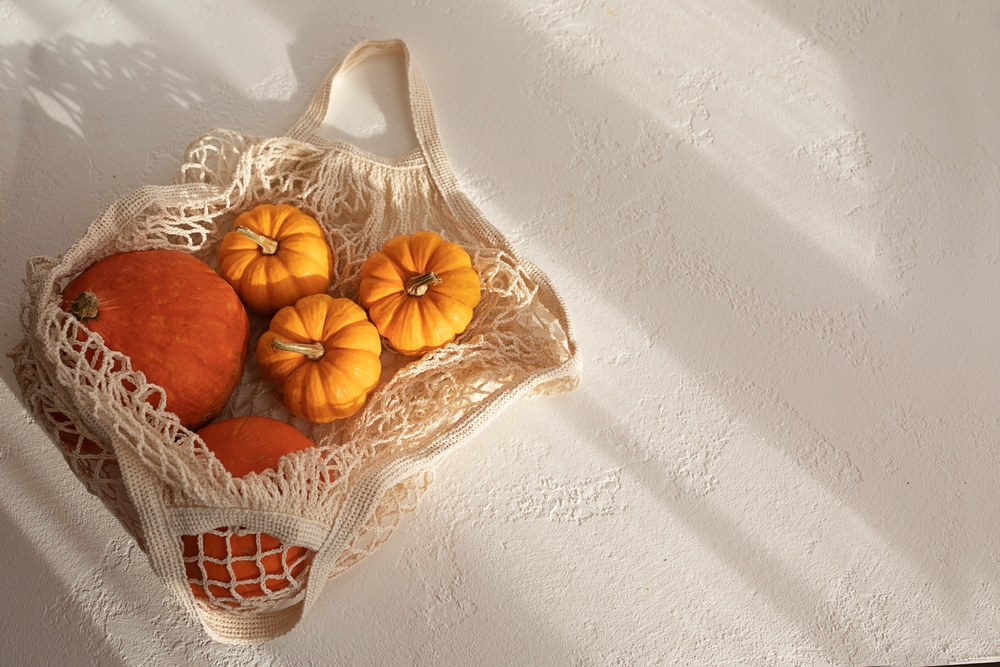
As pumpkins form on the vines, extra support may be needed to prevent damage. Gardeners often use slings made from old fabric or mesh bags. These slings cradle the pumpkins and reduce strain on the vines. They can be tied directly to the trellis to hold the fruit in place. Supporting pumpkins helps them grow evenly and safely.
The positive side is that slings prevent fruit from falling off prematurely. They also help maintain round shapes without flat spots from the ground. The drawback is that it takes time to check and adjust each sling as the fruit grows. In some cases, very heavy pumpkins may still stress the vines. Still, this method greatly improves the success of trellis gardening.
Space Pumpkin Plants Correctly on the Trellis
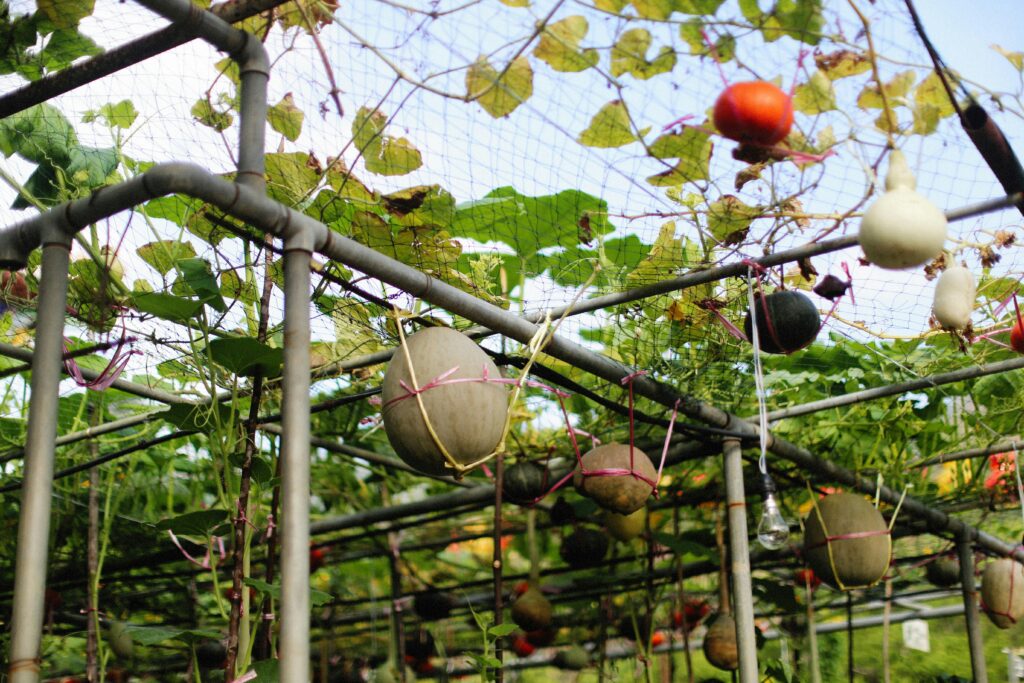
Pumpkin plants need room to spread their leaves and vines even when growing vertically. Planting them too close together can lead to overcrowding and competition for sunlight. A good rule is to leave at least two to three feet between each plant. This spacing allows each vine to climb freely without tangling. Adequate spacing also improves airflow around the leaves.
The benefit is fewer disease problems since the plants dry more quickly after watering or rain. Better spacing also helps the vines receive more sunlight, which leads to healthier growth. On the negative side, fewer plants can be grown in limited garden areas. Gardeners may have to balance between space and yield. Still, proper spacing is key for healthier pumpkins.
Water Pumpkins at the Base of the Plants
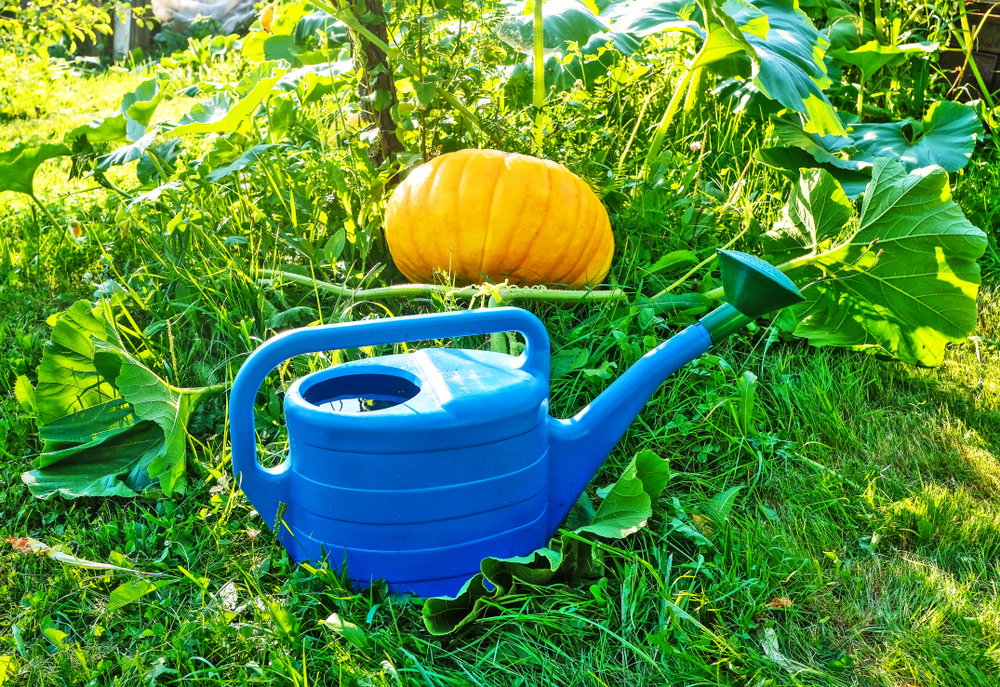
Watering at the base prevents the leaves from staying wet for too long. This reduces the chance of fungal problems such as powdery mildew. Drip irrigation or a soaker hose works best for this approach. Pumpkins need deep watering, especially when fruits are forming. Regular watering is important for consistent growth and healthy pumpkins.
A pro of this method is healthier vines with fewer leaf problems. It also helps conserve water by targeting the roots directly. A con is that it requires more planning compared to spraying with a hose. If watering is inconsistent, the pumpkins may crack or grow unevenly. Consistent watering leads to better harvests overall.
Feed Pumpkins with Balanced Fertilizer
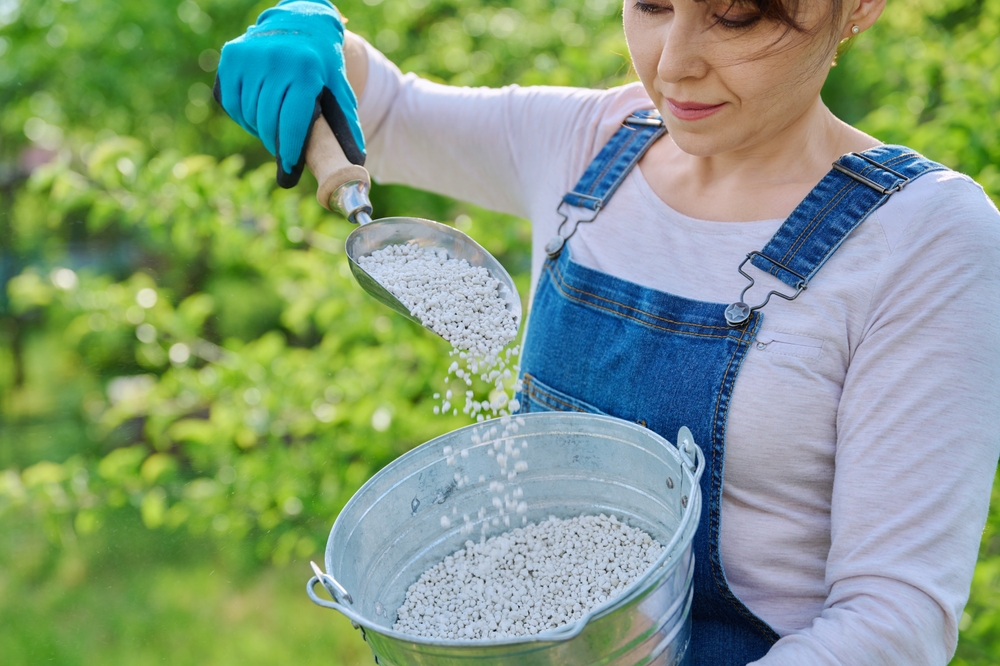
Pumpkins are heavy feeders that require nutrients throughout the season. A balanced fertilizer with nitrogen, phosphorus, and potassium works well. Adding compost or organic matter improves soil health and supports steady growth. Fertilizer should be applied regularly but not in excess. Overfeeding can cause too much leaf growth with fewer pumpkins.
The main advantage is stronger vines and larger, healthier fruit. Fertilizer ensures plants have the energy to climb and set pumpkins. The drawback is the risk of nutrient imbalance if too much is used. Overfertilized plants may appear lush but produce less fruit. Careful feeding keeps plants healthy and productive.
Prune Excess Pumpkin Vines for Better Growth
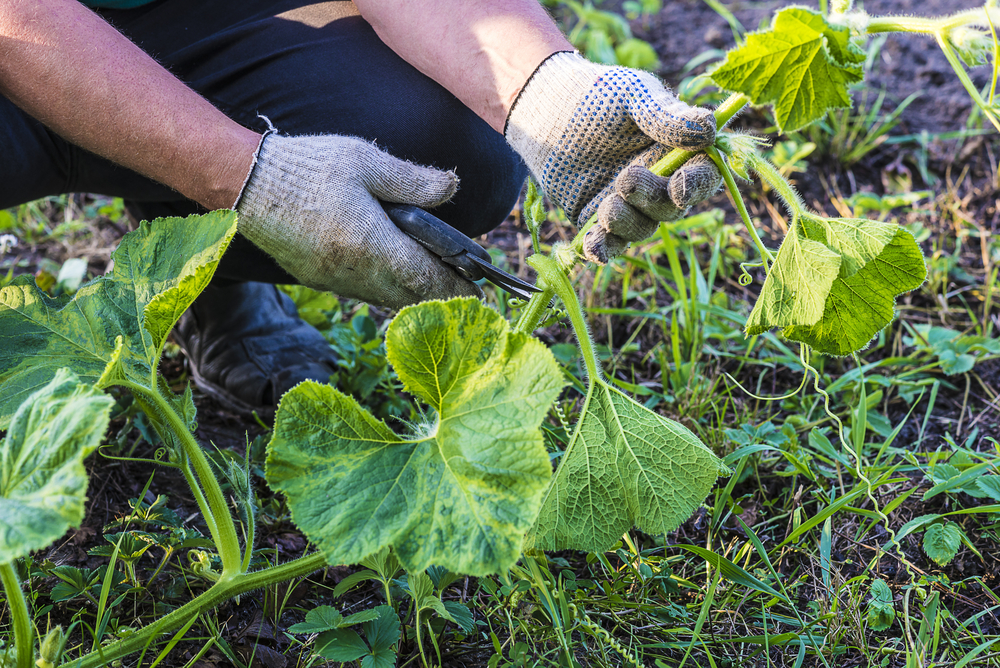
Pumpkin vines can grow long and spread in many directions. Trimming side shoots helps focus energy on the main vine. This results in larger and healthier pumpkins. Removing unnecessary growth also makes it easier to manage the trellis. Pruning should be done carefully to avoid stressing the plant.
The advantage of pruning is better fruit size and improved airflow. It makes the vines easier to guide on the trellis. The disadvantage is that too much pruning can slow growth or reduce yield. Timing and moderation are important for this step. Proper pruning helps balance plant health and fruit production.
Watch for Pests and Diseases on Trellis Pumpkins
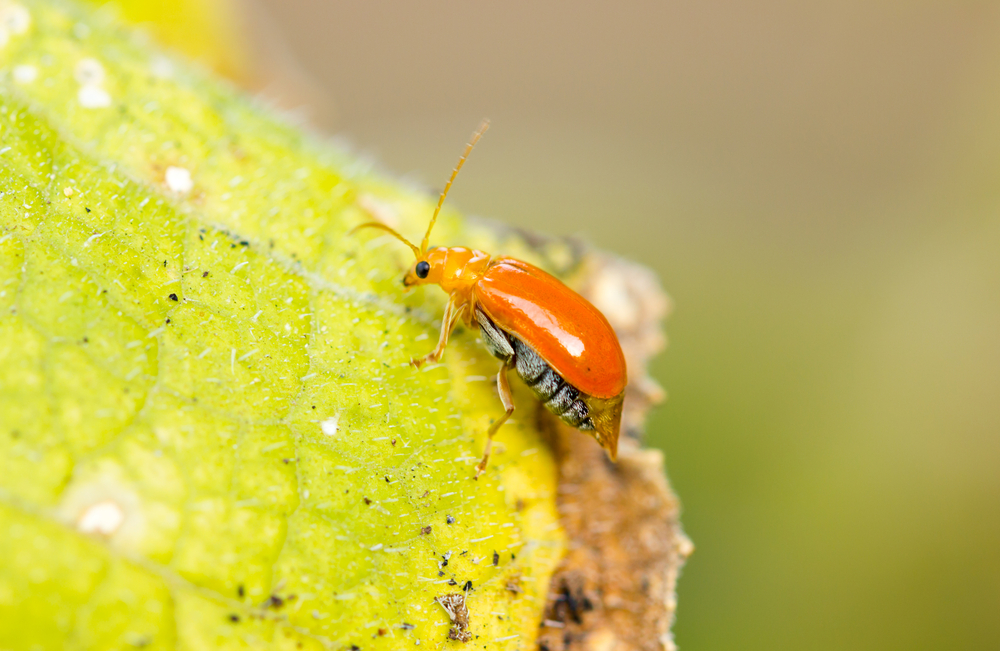
Even with vertical growing, pumpkins are still at risk of pests. Aphids, beetles, and squash bugs may appear on the leaves. Regular inspections can help catch issues before they spread. Diseases such as powdery mildew should also be watched closely. Healthy vines are more likely to produce quality fruit.
The advantage of using a trellis is that pests are easier to spot. Airflow around the plants helps lower disease risk. The drawback is that once pests are present, they can spread quickly in tight spaces. Treatment may require sprays or hand removal. Staying alert helps protect your crop.
Harvest Pumpkins at the Right Time
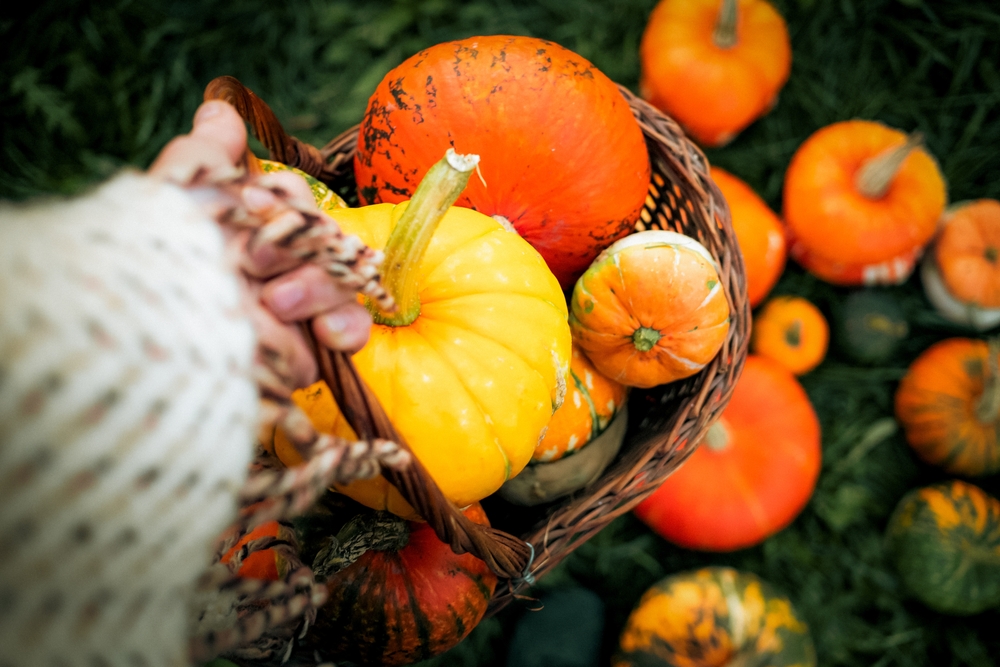
Harvesting at the correct stage ensures pumpkins store well and taste great. A pumpkin is ready when the skin hardens and the stem turns dry. Leaving a few inches of stem attached helps the pumpkin last longer. Harvesting too early may result in poor flavor and shorter storage life. Picking at the right time guarantees better results.
The positive side is that well-timed harvesting gives pumpkins a longer shelf life. They also develop better color and taste. The downside is that waiting too long can cause overripeness or splitting. Gardeners need to check each pumpkin regularly near the end of the season. Careful timing makes the harvest more rewarding.
Rotate Pumpkin Trellis Location Each Season
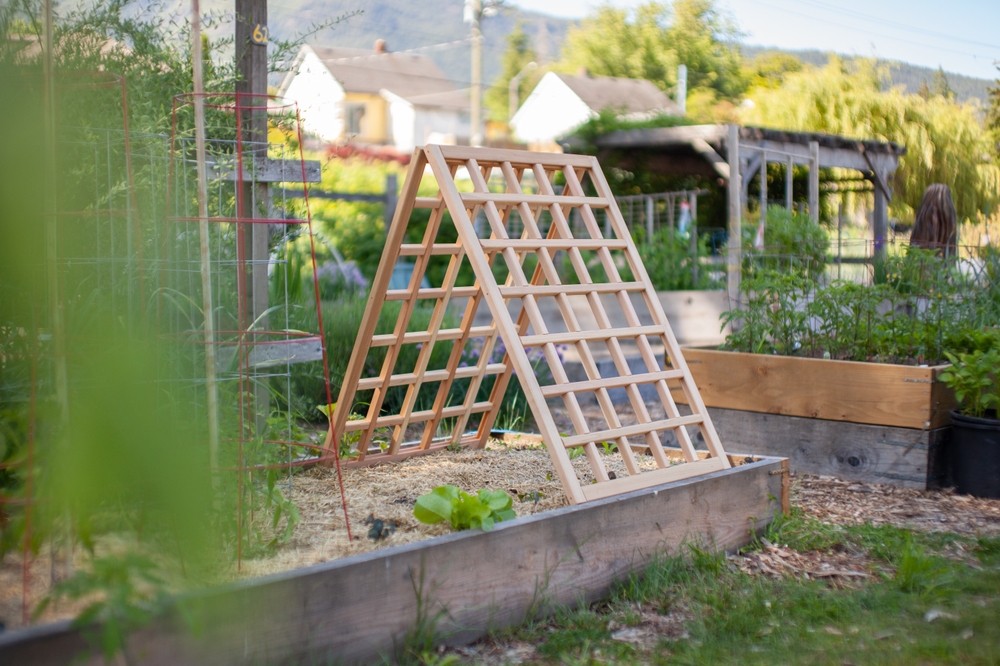
Planting pumpkins in the same place each year can build up pests and soil diseases. Rotating the trellis location prevents this problem. A different spot in the garden gives the soil time to recover. It also improves nutrient balance for the next crop. Moving the trellis is a simple but effective practice.
The advantage is healthier plants with fewer soil-borne problems. It helps maintain better yields over the years. The disadvantage is that rotation requires enough space in the garden. Not all gardeners may have room to move the trellis each season. Still, when possible, crop rotation strengthens long-term growth.
Trellis growing allows pumpkins to thrive while adding a practical and decorative element to your garden. It provides better use of space and makes maintenance easier, though it does call for steady attention. The results are rewarding when you balance the advantages with the possible drawbacks. Start experimenting with this approach and enjoy watching your pumpkins grow strong and healthy.
This article originally appeared on Avocadu.
